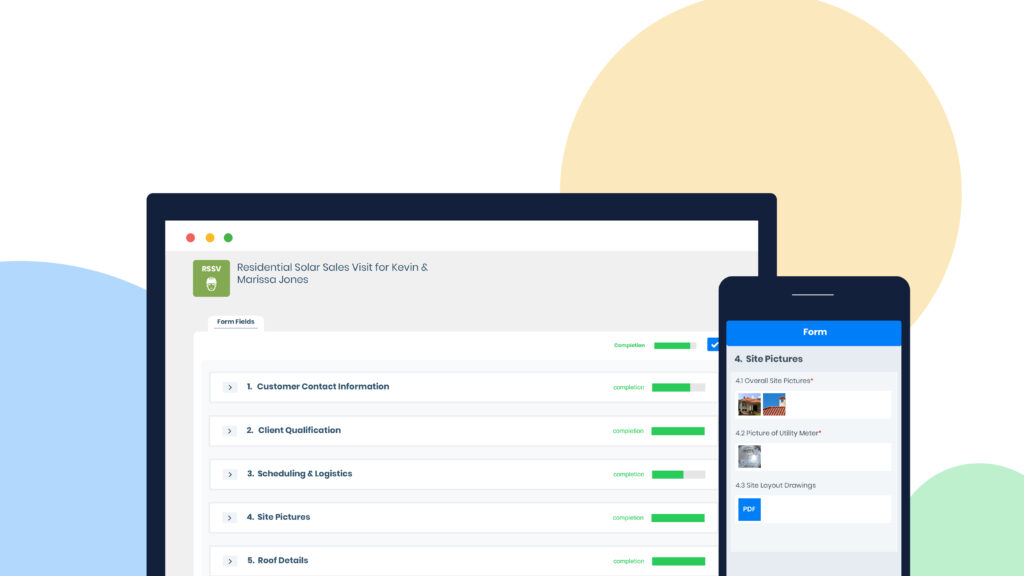From unstable ladders to deteriorating roofs, solar installation and maintenance crews can face a wide variety of job hazards in their daily work. Taking proactive measures to identify and prevent incidents are crucial to the safety of field workers, which can in turn drive down workers’ compensation costs and increase productivity.
In order to decrease the number of preventable incidents, every solar company needs to master a crucial safety procedure known as the Job Hazard Analysis (JHA) or Job Safety Analysis (JSA).
What is a Job Hazard Analysis?
The Occupational Safety and Health Administration (OSHA) defines a job hazard analysis (or job safety analysis) as a method of identifying hazards in job tasks before they happen. By doing so, actions can then be taken to reduce the risk or likelihood of an accident occurring in the work environment.
In the solar industry, Job Hazard Analysis is crucial to the safety of technicians that perform various operations on job sites every day. Having a comprehensive checklist of risks that crew members are trained to keep an eye out for is imperative to their job safety as no two solar sites are the same. After reading this post, you should have a good idea of how a JHA is developed and enforced.
How to Conduct a Comprehensive Job Hazard Analysis
Below are the two key steps for conducting a JHA:
List out the tasks that your team performs on a regular basis
Work with your employees to draft an exhaustive list of the different tasks that they perform throughout the day. Breaking down the tasks for a job like a residential PV installation lowers your chances of missing hazards in step two.

Brainstorm all the common and potential hazards associated with each task.
Working with your employees again, take each task that had been defined in step 1 and list out all the potential hazards that could be associated with it. Examples of hazards include equipment instability, chemical exposure, strained muscles, eye injuries or extreme temperatures. Ultimately, what you end up with are three columns, where the first two (Task and Hazards) help workers identify potential hazards and the third (recommendations) provides preventative measures that can be taken to mitigate those hazards.
However, how you implement your JHA is what determines whether it will be truly effective or not.
Without this Next Piece, a JHA is Next to Useless
Assuming that you have done a solid job at developing a JHA, the number one thing you need for it to be effective is accessibility. Plainly stated, a JHA that employees cannot easily use and is not enforceable is practically useless in guaranteeing the prevention of incidents.
In many field- and facility-based companies like solar, it is common practice to either print the JHA out and have it be filled out with pen and paper. Such a method is not only impractical for accessibility (what happens if an employee has forgotten the sheet back at the office?), but also unenforceable (how can you tell if it was completed properly?).
From our experience working with solar contractors, here are the best practices that we highly recommend you implement in order to make your JHA accessible and enforceable:
Use Checklists
This may sound simple, but the very act of converting a list into a form ensures that steps do not get missed. Checklists work!
Mobilize for Field Workers
What is more accessible than something that an employee can pull up on his/her smartphone? You can leverage technology so that the latest version of the JHA can be accessed online or offline by field technicians – without the hassle of printing out hundreds of copies after each revision.
The best part? Mobile-optimized checklists make it so easy that employees will actually want to fill out their documentation!
Leverage Multimedia Documentation of Hazards
With paper forms, employees may document hazardous incidents with handwritten notes or doodles – neither of which can be objectively interpreted.
When choosing to mobilize your Job Hazard Analysis processes, find a solution that has multimedia capabilities so that workers can use photos, audio or video to note down hazards for the next person working on that job site.
Train your Team Regularly
Routinely review, update and retrain your team on job hazard processes to ensure they are always aware of the latest updates and new steps in the JHA. Field engagement platforms like Scoop Solar help you track whether an employee has completed the relevant training in dashboards so you can keep an eye on your most risk-inclined employees.


